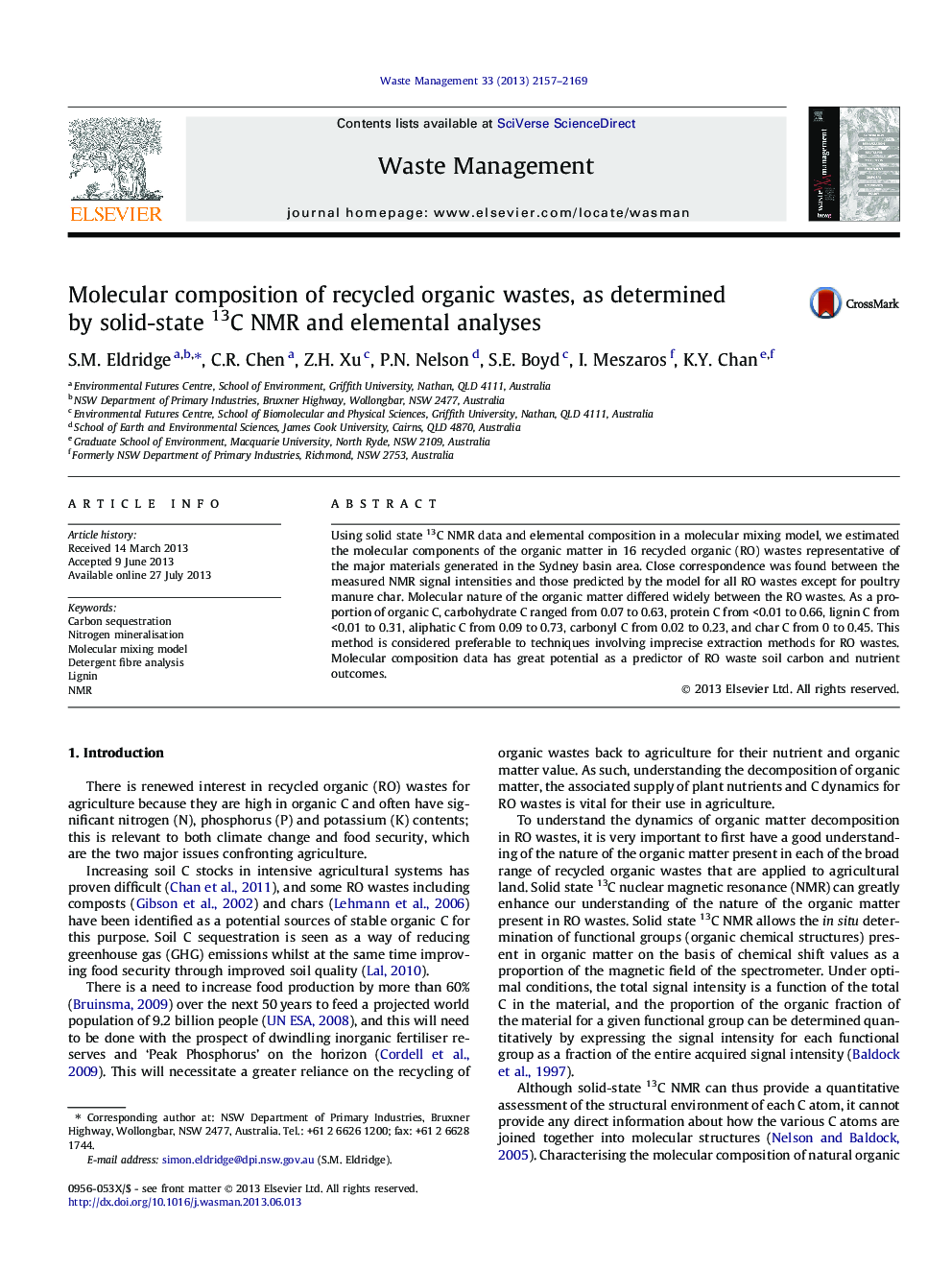| Article ID | Journal | Published Year | Pages | File Type |
|---|---|---|---|---|
| 4471696 | Waste Management | 2013 | 13 Pages |
•Model estimated the molecular C components well for most RO wastes.•Molecular nature of organic matter in RO wastes varied widely.•Molecular composition by NMR modelling preferable to extraction techniques.•Some model shortcomings in estimating molecular composition of biochars.•Waste molecular composition important for carbon/nutrient outcomes in soil.
Using solid state 13C NMR data and elemental composition in a molecular mixing model, we estimated the molecular components of the organic matter in 16 recycled organic (RO) wastes representative of the major materials generated in the Sydney basin area. Close correspondence was found between the measured NMR signal intensities and those predicted by the model for all RO wastes except for poultry manure char. Molecular nature of the organic matter differed widely between the RO wastes. As a proportion of organic C, carbohydrate C ranged from 0.07 to 0.63, protein C from <0.01 to 0.66, lignin C from <0.01 to 0.31, aliphatic C from 0.09 to 0.73, carbonyl C from 0.02 to 0.23, and char C from 0 to 0.45. This method is considered preferable to techniques involving imprecise extraction methods for RO wastes. Molecular composition data has great potential as a predictor of RO waste soil carbon and nutrient outcomes.
